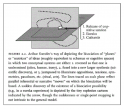The human voice, counterpoint, & the analysis of complex systems
the way he liked to have one AM and one FM station playing all the time in his apartment, one for news, the other for music; the way he could learn a score while talking on the phone; and the way he enjoyed eavesdropping on three or four conversations at the same time going on at neighbouring tables in the restaurants he haunted (Kostelanetz 1983: 127).
We can see here that Gould‘s basic thinking is in terms of multiple voices, often contrasting, in simultaneous awareness — Gould, Howes continues, spoke of counterpoint as “an explosion of simultaneous ideas”. As Gould puts it, Howes reports, when speaking of his radio programs for human voices:
The basis of it was that we tried to have situations arise cogently from within the framework of the program in which the two or three voices … [recorded previously in conversation with Gould, but with the latter’s voice edited out for the final version] … could be overlapped, in which they would be heard talking – simultaneously, but from different points of view – about the same subject. We also tried to treat these voices as though they belonged to characters in a play, though all the material was gained from interviews. It was documentary material, treated in a sense as drama (cited in Payzant 1982: 131).
This, then, is Gould‘s contrapuntal radio, and we can see Gould vividly transposing conytrapuntal imagination from the musical sphere to that of the varieties of human verbalization.
**
As not an aside but the re-introduction of a theme previously only hinted at, here is Arthur Koestler on the conceptual or creative leap:

**
Okay, our concept of music must shift, change, expand, if we are to consider Gould‘s Idea of North as a musical composition — in ways that are consistent with my own development of contrapuntal analysis. As Anthony Cushing explains in Glenn Gould and ‘Opus 2’: An outline for a musical understanding of contrapuntal radio with respect to The Idea of North:
A musical understanding of North requires re-thinking some traditional elements of music theory: harmony must take into consideration semantic content and shifting topic areas; form follows somewhat traditional musical structures (ternary, binary, etc.); and texture encompasses layering of literal voices and dispenses with traditional notions of melody. One must also consider the spatial component of tape composition, in which voices inhabit locations in a sound field. The later documentaries in the trilogy and the Leopold Stokowski and Pablo Casals tribute radio documentaries contribute to a more complete musical concept of contrapuntal radio — complex polyphonic textures, stereo sound, pitch-based harmonic content — the germ of contrapuntal radio was developed and actualized in North.
I’d like to take that lead, given us by the masterful pianist Glenn Gould, across into the field of analytic understanding — as a stream of analysis complementary and in counterpoint (for instance) to “big data” analytic tools — contrapuntal analysis characteristically working with a few, humanly-selected verbal utterances rather than data-points algorithmically-selected in the millions.
**
Moving to a larger geopolitical canvas, Edward Said once told an interviewer:
When you think about it, when you think about Jew and Palestinian not separately, but as part of a symphony, there is something magnificently imposing about it. A very rich, also very tragic, also in many ways desperate history of extremes – opposites in the Hegelian sense – that is yet to receive its due. So what you are faced with is a kind of sublime grandeur of a series of tragedies, of losses, of sacrifices, of pain that would take the brain of a Bach to figure out. It would require the imagination of someone like Edmund Burke to fathom.
We see here the invocation of Bach in a context of geopolitical analysis — one paragraph in the life-work of Said, who was a music critic as well as a well-known Palestinian-American public intellectual.
Page 2 of 3 | Previous page | Next page